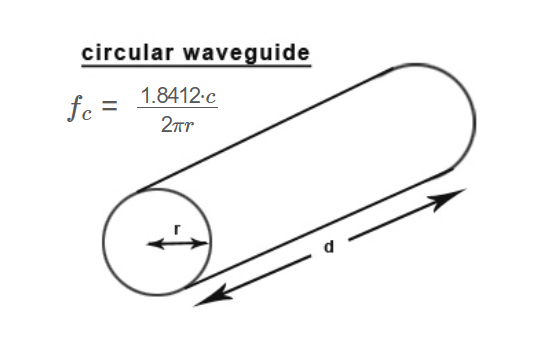 Home
Home
 Back
Back

Definition: This calculator computes the cutoff frequency (\( f_c \)) of a circular waveguide for the dominant TE11 mode, given the waveguide's radius. The cutoff frequency is the lowest frequency at which the waveguide can propagate a signal in the specified mode.
Purpose: It assists RF engineers, technicians, and students in designing circular waveguides for microwave applications, such as antennas, radar systems, and communication devices.
The calculator uses the formula:
\( f_c = \frac{1.8412 \cdot c}{2 \pi r} \)
Where:
Steps:
Calculating the cutoff frequency of a circular waveguide is essential for:
Example 1: Calculate the cutoff frequency for a typical waveguide:
Example 2: Calculate for a smaller waveguide:
Q: Why is the radius restricted to positive values?
A: The radius must be greater than zero to be physically meaningful and to avoid division by zero in the formula.
Q: Why does this calculator only compute the TE11 mode?
A: The TE11 mode is the dominant mode for circular waveguides and is most commonly used. Other modes require different Bessel function roots, which can be added if needed.
Q: What happens if the waveguide is filled with a dielectric material?
A: This simplified calculator assumes an air-filled waveguide (\( \varepsilon_r = 1 \), \( \mu_r = 1 \)). For dielectric-filled waveguides, the cutoff frequency would be lower due to the material properties.
Q: Why is the result formatted in scientific notation?
A: Values less than 0.001 or greater than 10000 are displayed in scientific notation for readability.